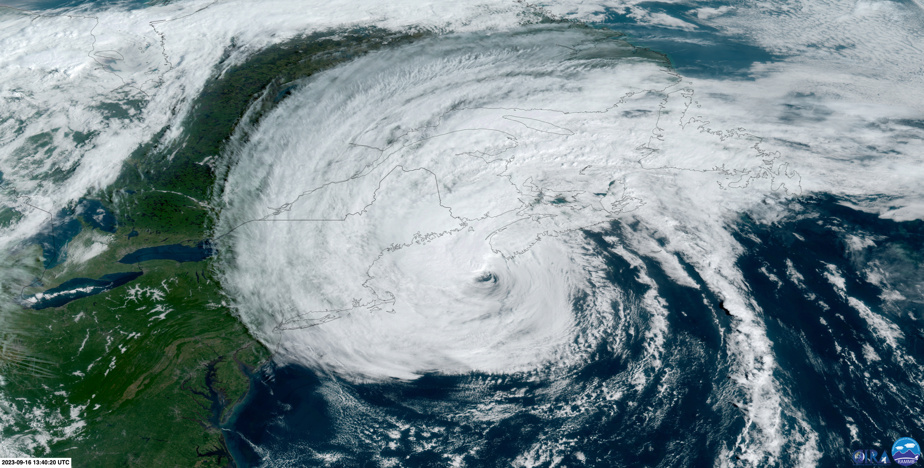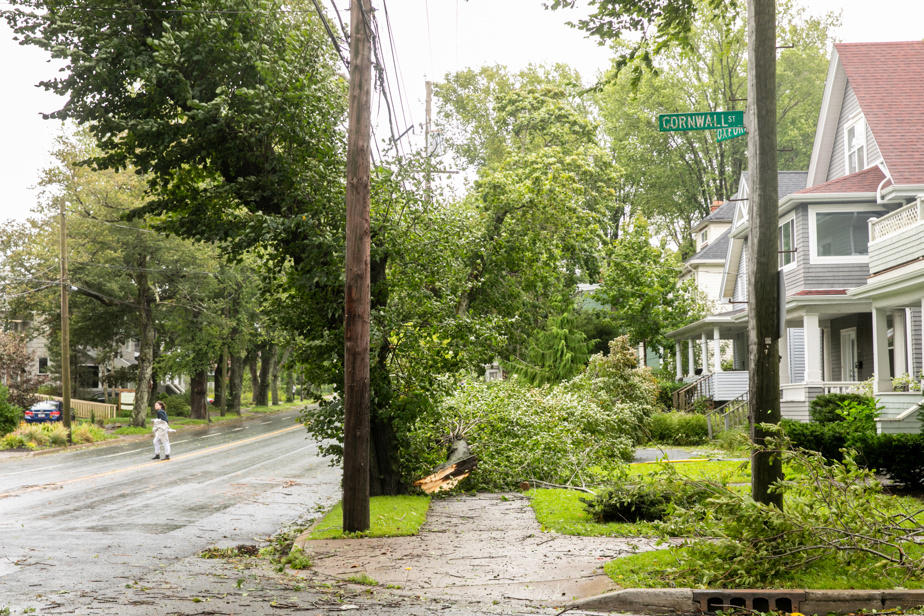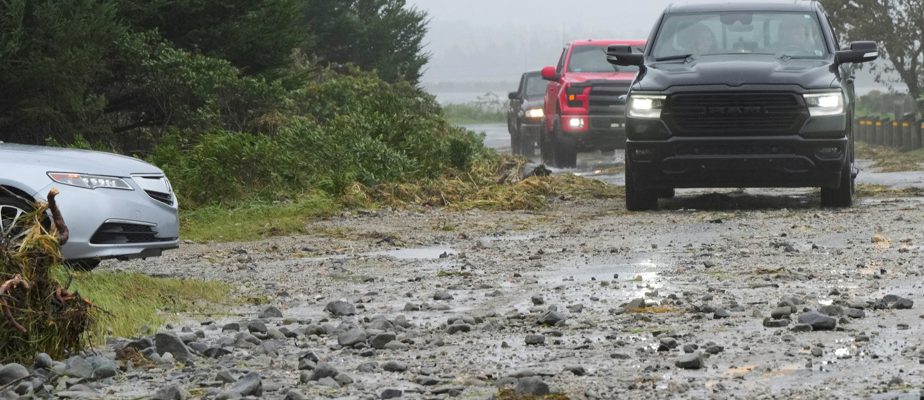The post-tropical storm Lee has already caused flooding, toppled trees and destroyed power lines in coastal regions of Nova Scotia and New Brunswick on Saturday as it headed north across the Atlantic Ocean to make landfall.
Power outages were already being reported in Nova Scotia and New Brunswick on Saturday morning, as people were warned to prepare for damaging winds, heavy rain and flooding.
Nova Scotia Power reported more than 147,000 customers were without power as of mid-afternoon, and the number was growing quickly. In the capital, the arrivals and departures board at Halifax Stanfield International Airport was covered in red indicating canceled flights.
More than 36,000 people were without power in New Brunswick at the same time.

PHOTO JOHN MORRIS, REUTERS
Cars try to avoid debris on a street in Lockeport, Nova Scotia.
Nicole Poirier, vice-president of operations for NB Power, said Friday that about 300 response teams were already mobilized Friday across the province in anticipation of widespread outages.
Lots of rain and strong winds
Around noon local time, Lee was about 90 kilometers southwest of Yarmouth, Nova Scotia, and the center of the storm was poised to make landfall later in the afternoon, said Environment Canada meteorologist Jill Maepea.

PHOTO PROVIDED BY CIRA-NOAA, VIA THE CANADIAN PRESS
This satellite image shows the post-tropical cyclone Lee in the Atlantic Ocean on Saturday, September 16, 2023 at 10:40 a.m. ADT.
Lee was initially expected to make landfall in southwest Nova Scotia, but Mme Maepea said its trajectory would head further west, possibly crossing the Bay of Fundy into southern New Brunswick.
The violent storm was moving at about 41 kilometers per hour across the Atlantic Ocean, packing sustained winds of about 120 kilometers per hour.
Heavy rains had already started in Yarmouth, about 375 kilometers west of Halifax in the southwest corner of the province.
Lee had already flooded parts of New Brunswick and Nova Scotia with up to 60 millimeters of rain. Mme Maepea announced that some regions would experience accumulations of more than 100 millimeters. Authorities recorded waves up to 12 meters high in some coastal areas, she added.
More than 100 millimeters of rain is possible in some areas, with Environment Canada warning of possible flooding in parts of southwestern Nova Scotia and New Brunswick, including Saint John and Moncton . Waves of four to six meters could surge along the Nova Scotia coast, and storm surge warnings are in effect from Shelburne County east to Guysborough County.

PHOTO KELLY CLARK, THE CANADIAN PRESS
Fallen trees block sidewalk in Halifax,
Winds reaching 90 kilometers per hour have already been reported along the Atlantic coast of Nova Scotia, from Halifax to Digby County, with a peak recorded at 108 kilometers per hour above Baccaro Point, in Shelburne County.
Environment Canada warns that gusts could reach 120 kilometers per hour, bringing down trees and power lines.
According to Environment Canada, the impact of Lee should be felt several hundred kilometers away from its trajectory in the afternoon.
A hurricane watch is in effect for Grand Manan and coastal Charlotte County, New Brunswick, as well as areas from Digby County to all of Halifax County, Nova Scotia.
Tropical storm watches have been replaced by warnings for most of New Brunswick, except the northwest part of the province, for Pictou and Antigonish counties on the Nova Scotia peninsula, for Cape Breton Island, for Prince Edward Island and soon for the Magdalen Islands.
A tropical storm warning is also in effect for the Fundy coast of New Brunswick as well as the Northumberland Strait coastline from Tidnish to Shediac.
Prepare for the worst
The Canadian Hurricane Center (ECCC) is asking concerned citizens to prepare and monitor updates on the storm’s path.
Prime Minister Justin Trudeau convened the task force Friday to discuss the hurricane’s potential effects in Atlantic Canada and parts of eastern Quebec.
The group, made up of ministers and senior civil servants, meets only to discuss events with significant implications for Canada, such as the recent ports strike in British Columbia and the wildfires in British Columbia and the Territories. of the North-West.
